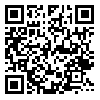BibTeX | RIS | EndNote | Medlars | ProCite | Reference Manager | RefWorks
Send citation to:
URL: http://journal.muq.ac.ir/article-1-1535-en.html


 , Seyed Mohammad Mirkhalili *
, Seyed Mohammad Mirkhalili * 

 2, Mohammad Ali Morowati Sharifabad3
2, Mohammad Ali Morowati Sharifabad3 

 , Jamshid Ayatollahi4
, Jamshid Ayatollahi4 

 , Hossein Fallahzadeh5
, Hossein Fallahzadeh5 


2- Department of Health Education & Promotion, Shahid Sadoughi University of Medical Sciences, International Campus, Yazd, Iran. ,
3- Department of Health Education & Promotion, Faculty of Public Health, Shahid Sadoughi University of Medical Sciences, Yazd, Iran.
4- Department of Infectious Diseases, Faculty of Medicine, Shahid Sadoughi University of Medical Sciences, Yazd, Iran.
5- Department of Epidemiology & Biostatistics, Faculty of Public Health, Shahid Sadoughi University of Medical Sciences, Yazd, Iran.
Background and Objectives: Influenza is one of the most common infectious diseases that its several pandemics cause a huge mortality and damages, often in developing countries. So this study aimed to determine the predictors of preventive behaviors of H1N1 influenza based on Health Belief Model among Jiroft people.
Methods: In this cross-sectional study, 400 people from Jiroft district in Kerman province entered with cluster random sampling. The study carried out in 2016. Data were collected with a research-made questionnaire which its validity and reliability were examined and approved. Data were analyzed with Pearson correlation coefficient and linear regression.
Results: Among the preventive behaviors, regularly washing hands with water and soap (%58 always, 24.2% often) and covering the mouth and noise when coughing and sneezing (%51 always, 27.5 often) were the mostly common behaviors. There was a positive significant correlation between behaviors and knowledge(r=0.206, p=0.001), perceived benefits(r=0.308, p=0.001), susceptibility(r=0.130, p=0.009) and severity (r=0.248, p=0.001). The Health Belief Model constructs predicted 15 percent of variance in preventive behaviors of H1N1 influenza, which among them, perceived benefits (β= 0.233) was the most powerful predictor.
Conclusion: The study results showed the applicability of Health Belief Model in predicting determinates of H1N1 influenza preventive behaviors. So Health Belief Model can be used in educational programs in order to changing attitudes and behaviors in this area.
Received: 2017/03/6 | Accepted: 2017/05/10 | Published: 2018/05/17
| Rights and permissions | |
 |
This work is licensed under a Creative Commons Attribution-NonCommercial 4.0 International License. |






